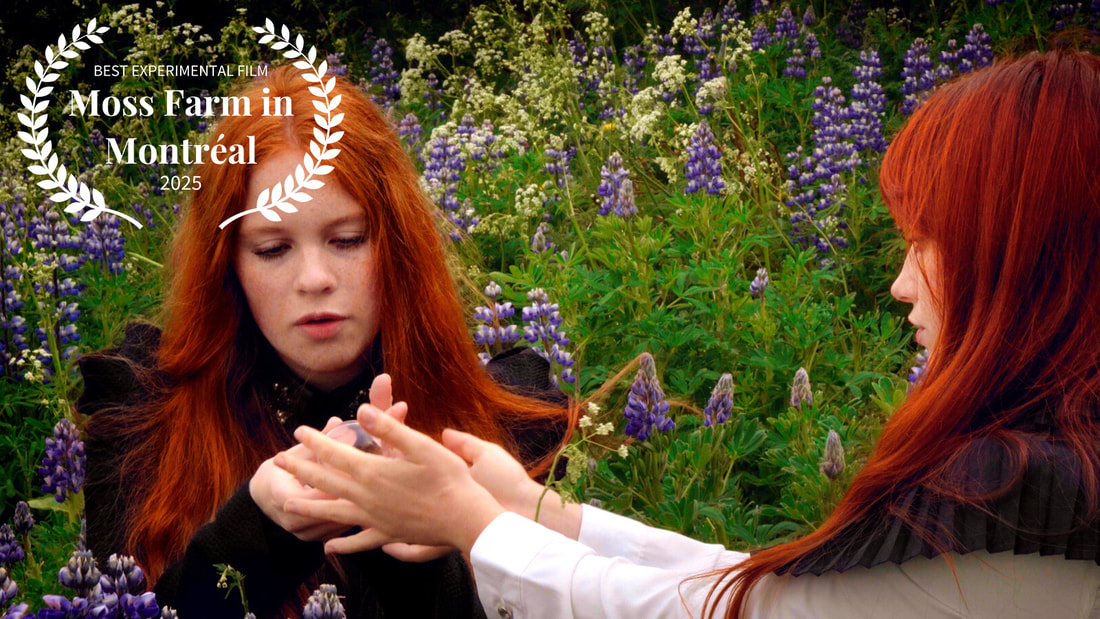best experimental film

Sumarsólstöður
In a world where art and reality collide, Miho’s vivid dreams reveal the cosmic force of the Architecture, uniting her with artists across the globe in a desperate battle to heal the universe.
Miho, a Japanese art researcher, begins experiencing vivid dreams that draw her into another dimension, linking her present reality to the trauma of Hiroshima and environmental concerns. She discovers an ancient force called the Architecture, responsible for guiding planetary evolution, that has been disrupted by dark forces.
Artists worldwide, connected to beings called Synesthetes, start experiencing the same dreams and join a cosmic battle to repair the universe. In a final performance, they attempt to heal the cosmic rift, channeling their creativity to reshape reality itself.
The line between dream and reality continues to fade, leaving everyone questioning: is the story real, or merely a fantastical illusion? One thing is certain—after this journey, nothing will ever be the same again.
Country of Origin: France
Amélie Ravalec, Director
Miho, a Japanese art researcher, begins experiencing vivid dreams that draw her into another dimension, linking her present reality to the trauma of Hiroshima and environmental concerns. She discovers an ancient force called the Architecture, responsible for guiding planetary evolution, that has been disrupted by dark forces.
Artists worldwide, connected to beings called Synesthetes, start experiencing the same dreams and join a cosmic battle to repair the universe. In a final performance, they attempt to heal the cosmic rift, channeling their creativity to reshape reality itself.
The line between dream and reality continues to fade, leaving everyone questioning: is the story real, or merely a fantastical illusion? One thing is certain—after this journey, nothing will ever be the same again.
Country of Origin: France
Amélie Ravalec, Director

Amélie Ravalec is a London-based Parisian film director, producer, photographer and publisher. She directed her first documentary film ''Paris/Berlin: 20 Years Of Underground Techno'' at the age of 16, which was released internationally in 2012 and won the Festival Pick Award at Sydney Fringe Festival.
Passionate about avant-garde, underground and experimental art and music, Amélie Ravalec went on to direct a documentary on industrial music, Industrial Soundtrack For The Urban Decay, hailed by The Guardian as “succeeding in capturing the sheer oddness of the nascent industrial scene”. Her next film Art & Mind explored the history of art and madness over 500 years, looking at visionaries from Hieronymus Bosch to Laurie Lipton.
Amélie Ravalec then directed two documentary films on Japanese avant-garde art and photography ("Japanese Avant-Garde Pioneers" and "Japan Visions"), to be released in 2025.
She also directed a series of short films focusing on the body in motion, featuring performers, dancers and fighting artists, and music videos for many electronic music and techno artists.
Amélie Ravalec started her publishing company Lone Gentlemen Publishing in 2018, where she published a series of limited edition photography and art books, featured in museums and art bookstores worldwide.
Passionate about new technologies, Amélie Ravalec also works with VR - she edited Fan Club, one of the first VR feature films - and has published an art book entirely made with AI, Posthuman Codex, as a continuation of her photographic work.
Director Statement
At the heart of Sumarsólstöður lies a bold ambition: to craft a dazzling narrative that blends art and adventure, sci-fi and history, literature and painting. But beneath this creative vision lies a troubling truth: our collective intelligence is faltering. Our civilization, the result of billions of years of evolution, now enters its tenth millennium. What we have achieved—our creations, our innovations, our profound understanding of the world—is nothing short of astounding. Our capacity to adapt, solve problems, and shape our reality is, as far as we know, unique in the natural world.
Yet, alongside these triumphs comes a sobering realization: our intelligence, the very thing that sets us apart, seems to be steering us toward destruction. The marvels we’ve built appear to be unraveling, pushing us toward the extinction of not just our species, but the ecosystem that sustains all life. We are no longer simply intelligent—we are becoming dangerously misguided. It echoes the opening scenes of many superhero tales from the 1960s, where, after pages of action, a haunting question lingers: “How did it come to this? Where did we go wrong when we had everything we needed to succeed?” In just ten thousand years, we have crossed a chasm, from the dawn of civilization to the brink of environmental collapse and global conflict. How can a species capable of painting the Mona Lisa and inventing democracy also pave the way for its own demise? Why can’t we retain the best of our progress and avoid the worst?
Sumarsólstöður seeks to answer this question through a story that bridges past and future, fact and fiction. It imagines a world where heroes from history and art are called upon to reshape the future by reinterpreting the narratives that define our collective past. This story is not just about dreams or imaginary worlds; it is about using creativity to confront our greatest challenges. Through the emotional depth of its characters and the stakes they face, it explores how the power of art, imagination, and human ingenuity can rewrite our fate. Our heroines and heroes are tasked with saving the future—not through brute force, but by repairing the past, weaving together new interpretations of the stories that have shaped humanity. At its core, this is a tale of hope, a reminder that the key to our salvation lies within the very things we have created.
